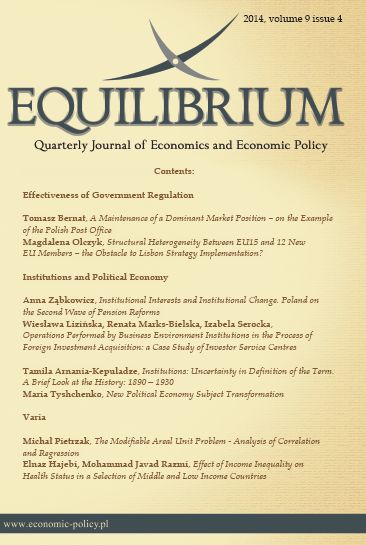Structural Heterogeneity Between EU 15 and 12 New EU Members – the Obstacle to Lisbon Strategy Implementation?
Structural Heterogeneity Between EU 15 and 12 New EU Members – the Obstacle to Lisbon Strategy Implementation?
Author(s): Magdalena OlczykSubject(s): Economy, Supranational / Global Economy
Published by: Instytut Badań Gospodarczych
Keywords: Lisbon targets; European Union; multivariate analysis; structural indicators
Summary/Abstract: The aim of this article is to identify diversity between the EU-15 and the New Members in their implementation of the Lisbon Strategy in the period 2000-2010. By analyzing a set of structural indicators, we aim to fill a gap in the literature: the lack of publications providing complex evaluation of the implementation of the Lisbon Strategy using measurable indicators. Given their suitability for international comparisons, we use two taxonomic methods: Ward’s cluster analy-sis and the synthetic variable method proposed by Hellwig.The results of our analyses confirm the hypothesis of a large gap between the EU-15 countries and the 12 New Members in the key areas of the Lisbon Strategy. According to rankings given by our taxonomic analyses, a high level of the indicators selected is confirmed only for the EU-15 countries and only three New Members belong to a group presenting the average level of these indicators. This study demonstrates a need for a significant intensification of the EU cohesion policy, which is one of the main tools for achieving the Lisbon Strategy goals.
Journal: Equilibrium. Quarterly Journal of Economics and Economic Policy
- Issue Year: 9/2014
- Issue No: 4
- Page Range: 21-43
- Page Count: 22
- Language: English

